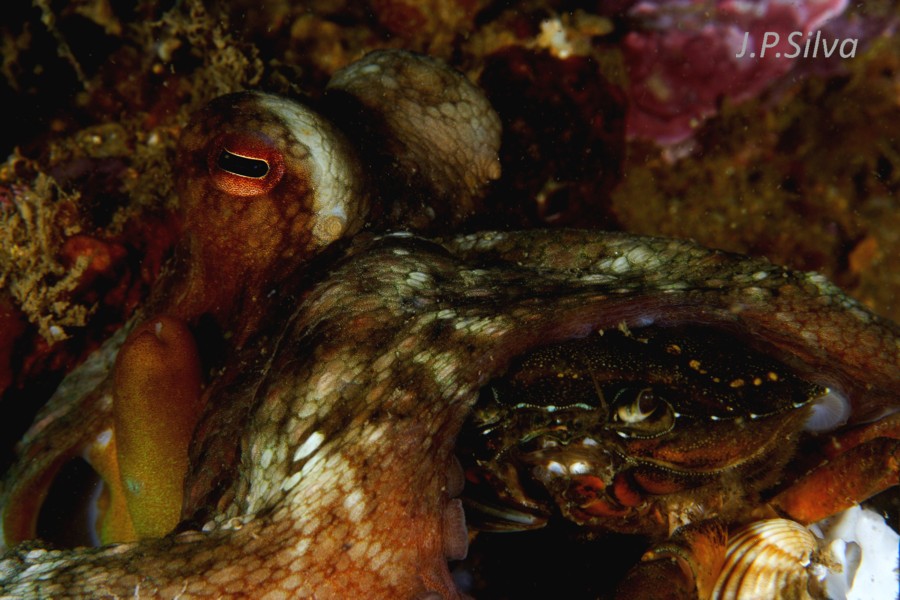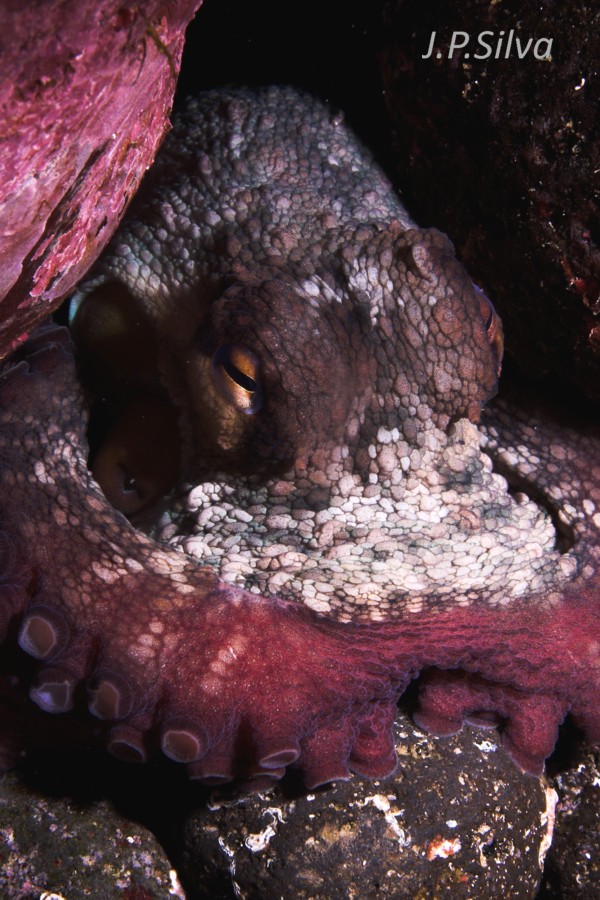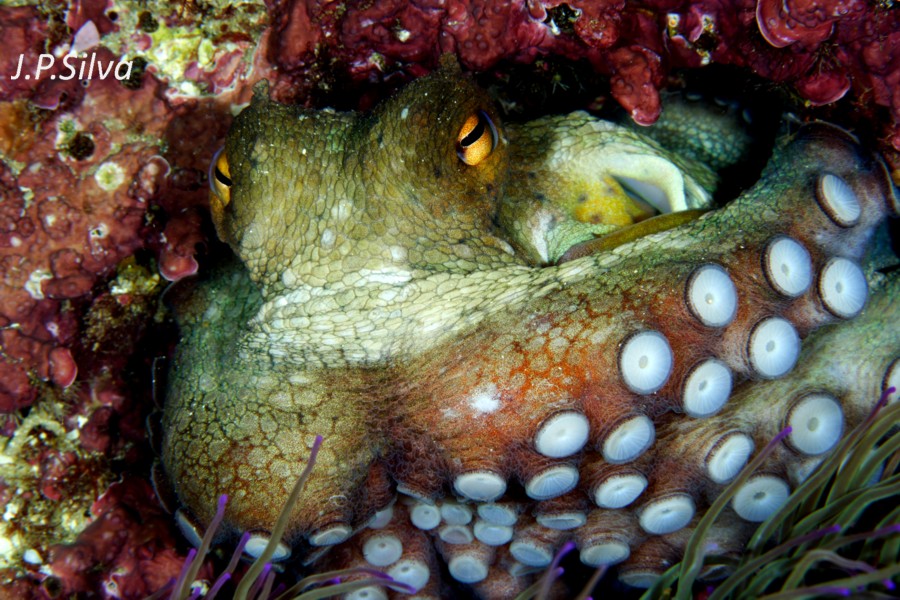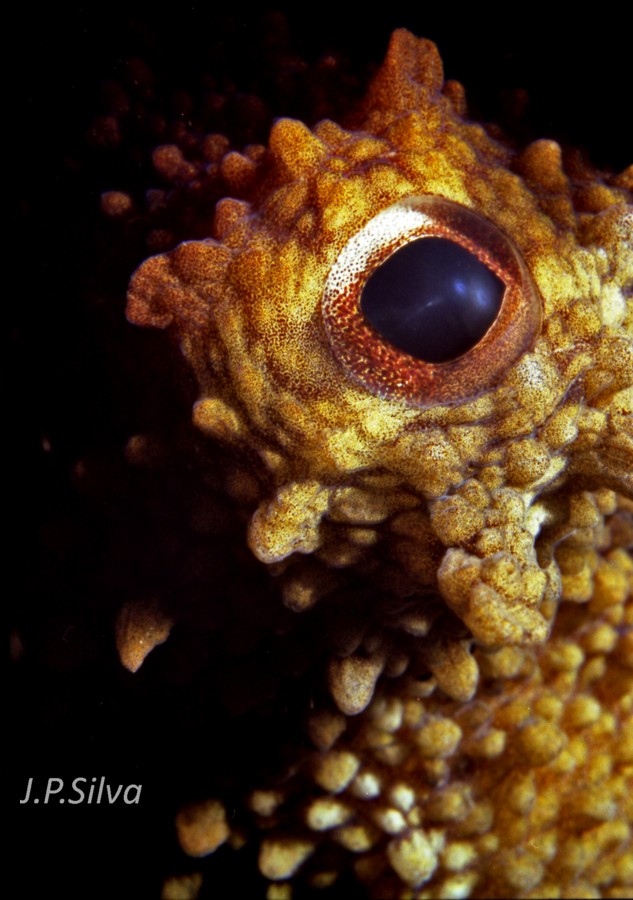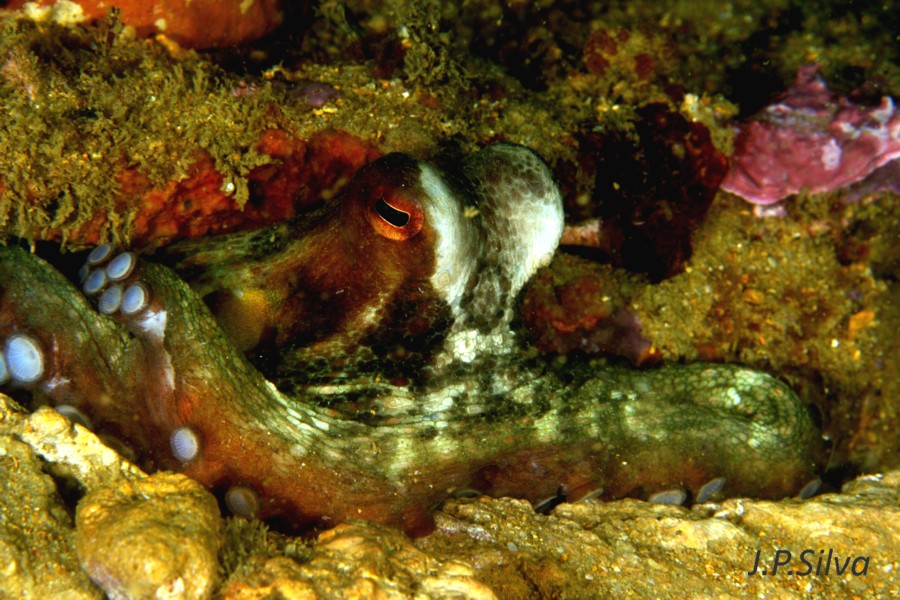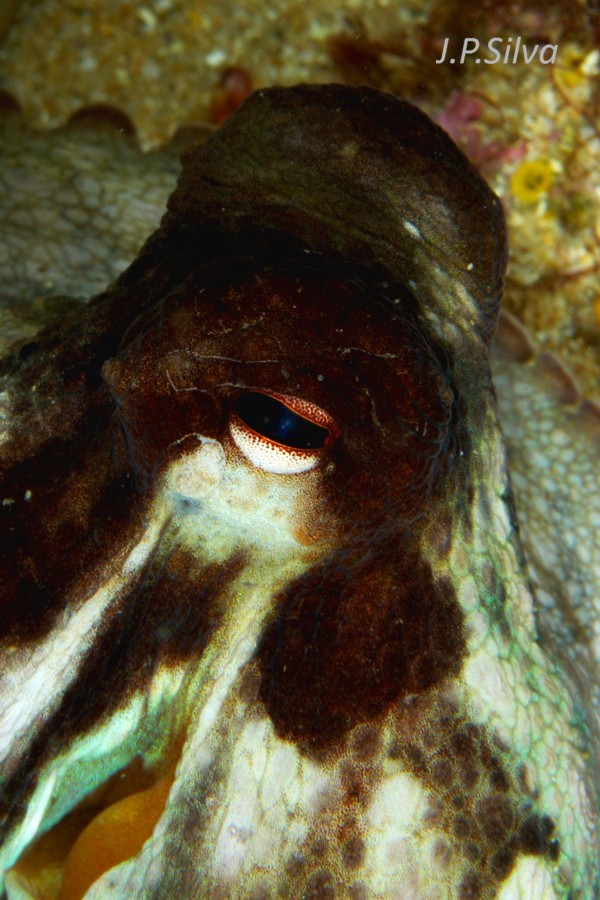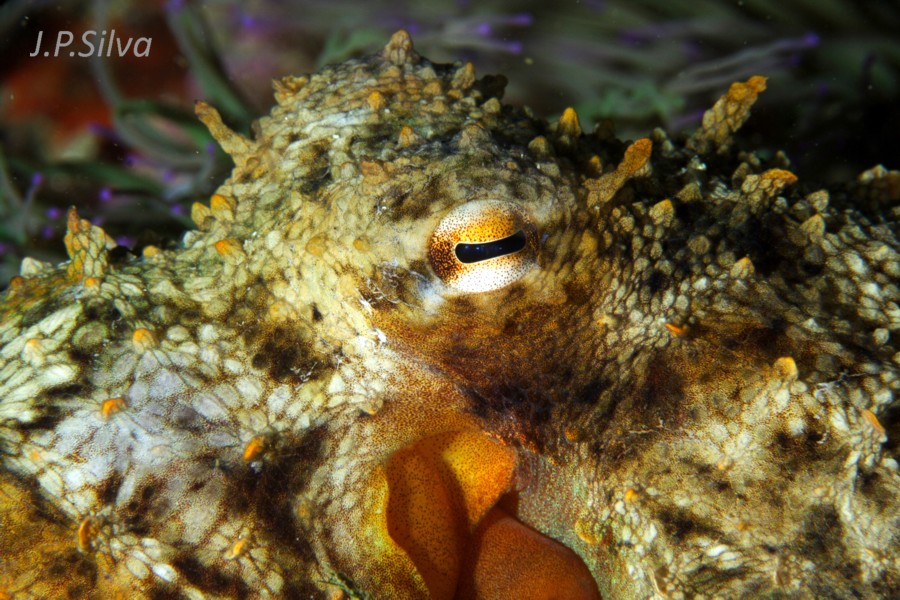Octopus vulgaris. Primarily a benthic animal, spending much time in its lair among rocks waiting for passing prey. Brown and white body and purplish tentacles well camouflaged against similar rocks.
Octopus vulgaris. Each arm has two rows of suckers. Each sucker in one line sometimes level with a gap in the other. November 2011. Sublittoral. Setúbal, Portugal.
Octopus vulgaris. Eye aperture can be opened wide in low light. March 2005. Sublittoral. Leiria, Portugal.
Octopus vulgaris. Pupils are horizontal slits, so slit aperture permits good vision. July 2012. Sublittoral. Setúbal, Portugal.
Octopus vulgaris. Large, highly-developed eyes on dorsal mounds tilted forwards and focussed on a crab during glide approach. April 2011. Sublittoral. Faro, Portugal.
Octopus vulgaris. Large, highly-developed eyes on raised dorsal darkened mounds. December 2011. Sublittoral. Setúbal, Portugal.
Octopus vulgaris. Large, highly-developed eyes on raised dorsal lobose mounds. This form justifies the occasionally used alternative name “devilfish”. August 2011. Sublittoral. Setúbal, Portugal.
Octopus vulgaris swimming. Bag-like body, with warty surface. Eight equal arms with two rows of suckers each. Arms linked basally by web. Palma aquarium, Mallorca, Spain. June 2009.
Species
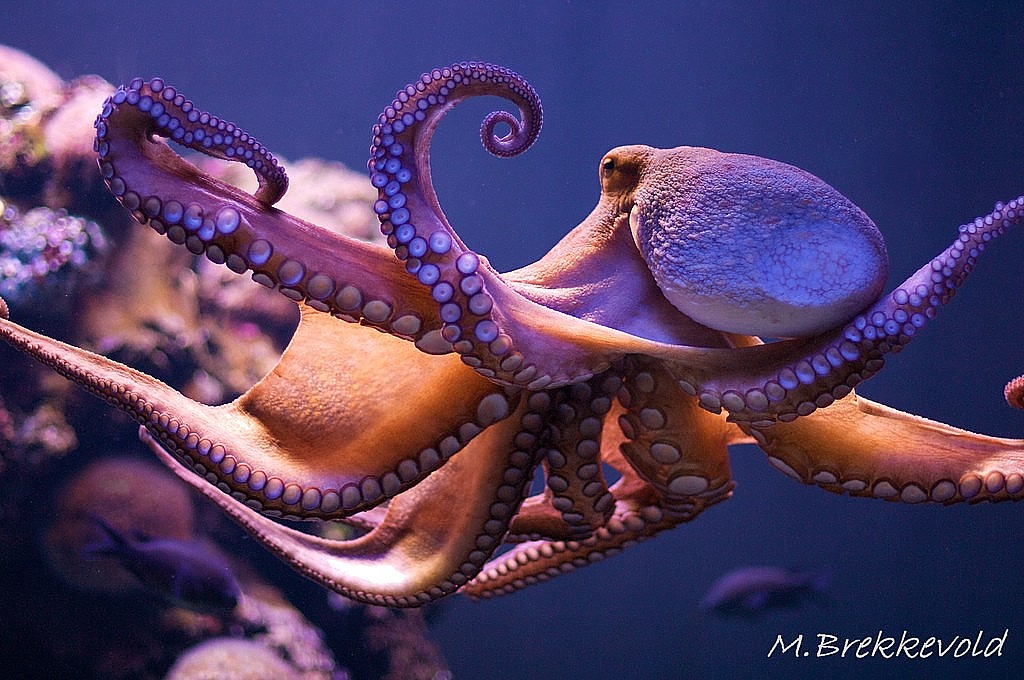
Photographer / copyright holder
M. Brekkevold http://www.flickr.com/photos/lunkwill42/3658339290/

